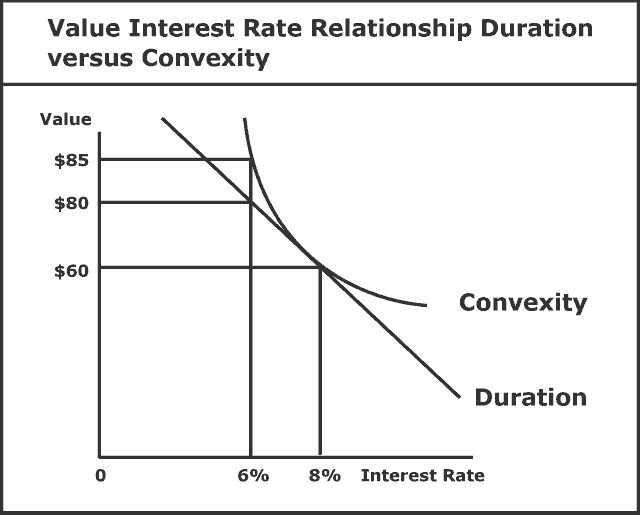
The distinction is based upon the years to maturity at the time the debt was issued. For the subordinated term debt included under Tier 2, the amount that can be counted towards capital is reduced by 20% for every year when the debt is due within 5 years. This takes care of the time to maturity problem for Tier 2 subordinated debt. For Tier 3 short term subordinated debt, this is not an issue because debt will only qualify for Tier 3 if it has a lock-in clause stipulating that the debt is not required to be repaid if the effect of such repayment is to take the bank below minimum capital requirements.
The full list is published annually in the Joint Report on Multilateral Development Banks’ Climate Finance and can be found in Table A.C.1 of the report. All lending operations (IPFs, DPLs, and PforRs) are assessed for climate co-benefits. Projects’ Climate Co-Benefits are assigned only to the financing (or a portion of the financing) dedicated to eligible adaptation and/or mitigation activities. The assessment is based on project components/sub-components for IPFs, Prior Actions for DPFs, and Disbursement Linked Indicators (DLIs) for PforRs. An interesting thing to note is the difference between ‘subordinated term debt’ under Tier 2 and the ‘short term subordinated debt’ under Tier 3.
Tier-3 Capital
In general, all of the Basel Accords provide recommendations on banking regulations concerning capital, market, and operational risks. Tier 3 capital consisted of subordinated debt to cover market risk from trading activities, but it is now not used in the banks of Basel Accord member countries. Basel III aims to strengthen the requirements in the Basel II regulatory standards for banks.
Tier 2 capital includes revaluation reserves, hybrid capital instruments, and subordinated debt. In addition, tier 2 capital incorporates general loan-loss reserves and undisclosed reserves. Tier 3 capital includes a greater variety of debt than tier 1 and tier 2 capital but is of a much lower quality than either of the two. Under the Basel III accords, tier 3 capital is being completely abolished. Capital tiers for large financial institutions originated with the Basel Accords.
Share of climate co-benefits over total commitments in IDA-supported operations (%)
This means that, if a bank fails, its Tier 2 assets will absorb any losses before its creditors or depositors do. Revalued reserves is an accounting method that recalculates the current value of a holding that is higher than what it was originally recorded as, such as with real estate. Hybrid capital instruments are securities that have both equity and debt qualities, such as convertible bonds. These funds are generated specifically to support banks when losses are absorbed so that regular business functions do not have to be shut down.
- Often banks will split these funds into upper- and lower-level pools depending on the characteristics of the individual asset.
- Tier 1 capital is intended to measure a bank’s financial health; a bank uses tier 1 capital to absorb losses without ceasing business operations.
- #IDAworks to close gender gaps by bringing girls to school, helping women gain access to vital assets, and ensuring they can obtain financing to start businesses.
- Watch how IDA helps increase women and adolescent girls’ empowerment and access to quality education and reproductive, child, and maternal health services.
Having these types of liquid assets or cash on hand balances out the risk-weighted assets that banks hold. Basel I required international banks to maintain a minimum amount (8%) of capital based on a percent of risk-weighted assets. Basel I also classified a bank’s assets into five risk categories (0%, 10%, 20%, 50%, and 100%) based on the nature of the debtor (e.g., government debt, development bank debt, private-sector debt, and more). If the markets collapsed (which they did), the banks would have to cover losses with higher-quality debt such as shareholder’s equity, retained capital, or supplementary capital, draining their accounts. The Accords set the capital adequacy ratio (CAR) to define these holdings for banks.
CA-2.4 CA-2.4 Calculation of the capital ratio
A bank’s total capital is calculated by adding its tier 1 and tier 2 capital together. BCBS published Basel III in 2009, following the 2008 financial crisis. Basel III was designed to improve the banking sector’s ability to deal with financial stress, improve risk management, and strengthen a bank’s transparency. Basel III implementation began on Jan. 1, 2013, with a 10 percentage point reduction in Tier 3 assets every year following.
Apollo Hospitals seeks shareholders’ nod to raise Rs 500 cr through NCDs to part-fund capex – The Financial Express
Apollo Hospitals seeks shareholders’ nod to raise Rs 500 cr through NCDs to part-fund capex.
Posted: Tue, 08 Aug 2023 21:00:00 GMT [source]
This higher minimum reflects the PRA’s differing treatment of the leverage ratio, which excludes central bank reserves in ‘Total exposure’ of the calculation. Banking regulations known as the Basel Accords require banks to have different types of capital on hand. These liquid and cash assets balance out the risk-weighted assets that banks hold.
Tier 1 Capital vs. Tier 2 Capital: What’s the Difference?
These are a set of three (Basel I, Basel II, and Basel III) regulations, which the Basel Committee on Banking Supervision (BCBS) began to roll out in 1988. In general, all of the Basel Accords provide recommendations on banking regulations with respect to capital risk, market risk, and operational risk. Under the Basel Accord, a bank has to maintain a certain level of cash or liquid assets as a ratio of its risk-weighted assets. The Basel Accords are a series of three sets of banking regulations that help to ensure financial institutions have enough capital on hand to handle obligations. In addition to minimum capital requirements, Basel II focused on regulatory supervision and market discipline. Basel II highlighted the division of eligible regulatory capital of a bank into three tiers.

The methodology is used by seven MDBs to track and report annually on MDB climate finance and takes different approaches to tracking adaptation and mitigation co-benefits. Climate change mitigation promotes efforts to reduce, limit, or sequester GHG emissions to reduce the risk of climate change. Mitigation co-benefits are determined based on a list of activities that are compatible with low-emission pathways that have been agreed upon by MDBs to be classified as climate mitigation finance. The list covers nine categories of activities, such as energy generation, energy efficiency, agriculture, waste and wastewater, and transport. Not all activities that reduce GHGs in the short term can receive mitigation co-benefits.
A Tier 3 account is a retail industry term for a target account or an account a business would like to create for an ideal customer. Julia Kagan is a financial/consumer journalist and former senior editor, personal finance, of Investopedia.
- Under the Basel Accord, a bank has to maintain a certain level of cash or liquid assets as a ratio of its risk-weighted assets.
- Tier 1 capital consists of shareholders’ equity and retained earnings, which are disclosed on their financial statements.
- The Basel Accords stipulate that tier 3 capital must not be more than 2.5x a bank’s tier 1 capital nor have less than a two-year maturity.
This increases banks’ stability, which increases the stability of the overall financial system. It includes assets such as revaluation reserves, hybrid capital instruments, and undisclosed reserves. Tier 2 capital is supplementary capital because it is less reliable than tier 1 capital. It is more difficult to accurately measure due because it is composed of assets that are difficult to liquidate. Often banks will split these funds into upper- and lower-level pools depending on the characteristics of the individual asset. Banks must hold certain percentages of different types of capital on hand.
Tier 2 capital is a bank’s supplementary capital, which is held in reserve. Basel III seeks to improve the banking sector’s ability to deal with financial stress, improve risk management, and strengthen a bank’s transparency. Under Basel III, the bank met the minimum total capital ratio of 12.9%. Under Basel III, the minimum total capital ratio is 12.9%, which indicates the minimum tier 2 capital ratio is 2%, as opposed to 10.9% for the tier 1 capital ratio. Defined by the Basel II Accords, to qualify as tier 3 capital, assets must have been limited to 2.5x a bank’s tier 1 capital, have been unsecured, subordinated, and have an original maturity of no less than two years. The indicator measures the number of IDA countries taking IFF-related policy actions, such as increasing access to and awareness of beneficial ownership information and/or adopting automatic exchange of information to reduce tax evasion.
In addition to increasing capital requirements, it introduces requirements on liquid asset holdings and funding stability, thereby seeking to mitigate the risk of a run on the bank. A bank’s tier 1 capital ratio compares its core equity assets to its risk-weighted assets. A high ratio means that the bank has enough liquid assets on hand and is more likely to absorb losses without the risk of a bank failure. tier 3 capital consisted of low-quality, unsecured debt issued by banks before the Great Financial Crisis.
Tier 2 capital cannot exceed Tier 1 capital, which means that effectively at least 50% of a bank’s capital base should consist of Tier 1 capital.Tier 1 capital is the most stable and reliable source of funding for a bank’s operations. Ratio of disbursements during the fiscal year to the undisbursed balance at the beginning of the fiscal year for IDA investment project financing projects. There is instead a corporate standard based on historical experience. Share of IDA investment project financing operations for which at least one citizen engagement indicator is included in the results framework of the PAD. Percentage of Country Partnership Framework (CPF) Completion Reports rated moderately satisfactory, satisfactory or highly satisfactory by Independent Evaluation Group (IEG). Data is reported for CPFs of IDA eligible countries, including blend countries, during CPF period”.

Many banks held tier 3 capital to cover their market, commodities, and foreign currency risks derived from trading activities. What this really means is that banks used loans from other banks to cover any losses they took while trading on several markets. Basel I required international banks to maintain a minimum amount (8%) of capital, based on a percent of risk-weighted assets.
(iii) extent to which the operation achieves a higher rate of return than the opportunity cost of capital, or is able to provide a similar economic justification (efficiency). As Basel III does not absolutely require extreme scenarios that management flatly rejects to be included in stress testing this remains a vulnerability. The minimum Tier 1 capital increases from 4% in Basel II to 6%,[7] applicable in 2015, over RWAs.[8] This 6% is composed of 4.5% of CET1, plus an extra 1.5% of Additional Tier 1 (AT1).
